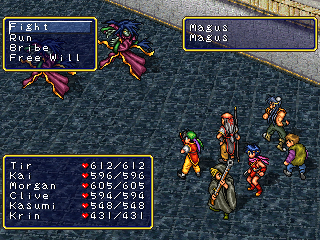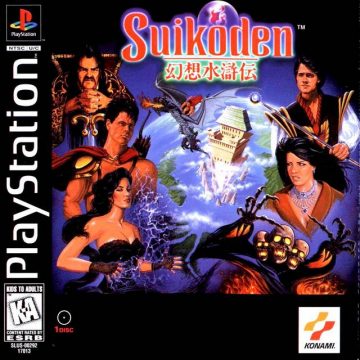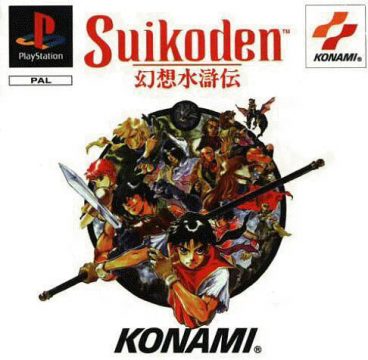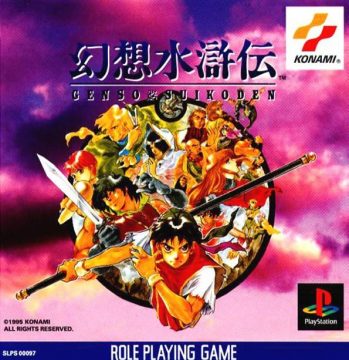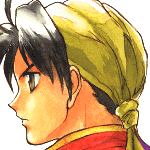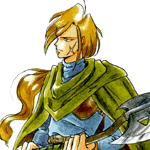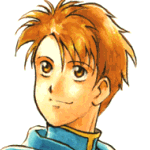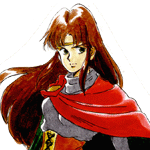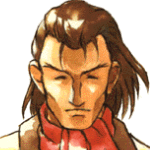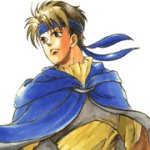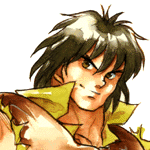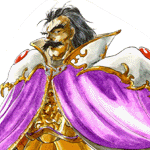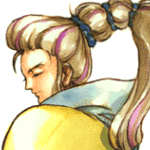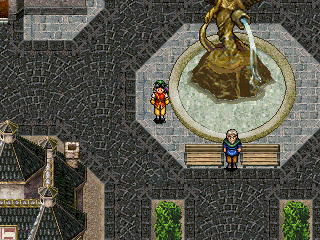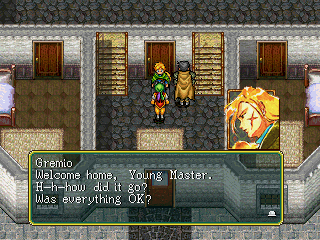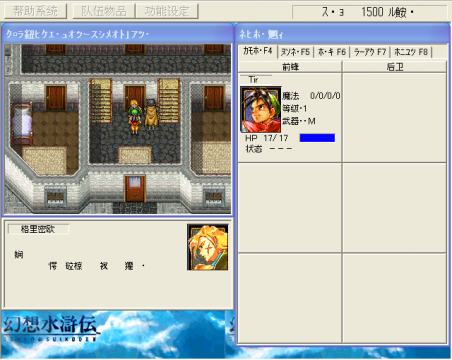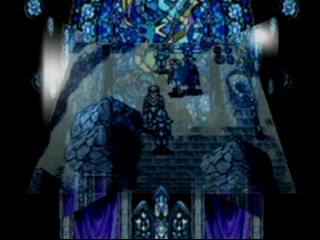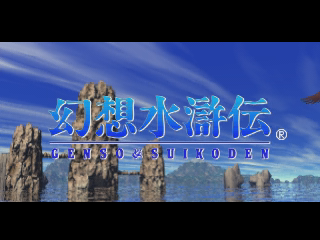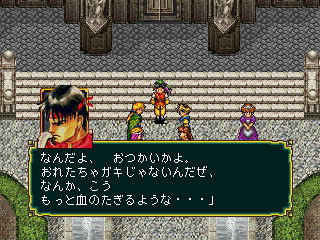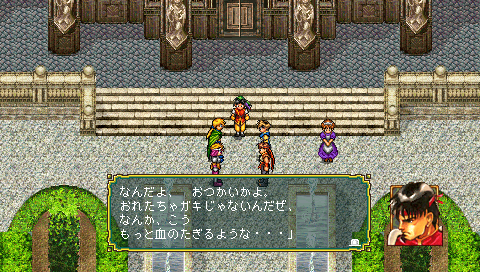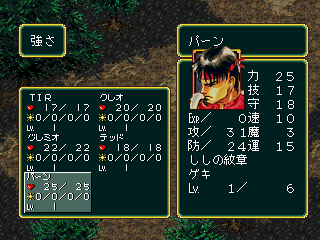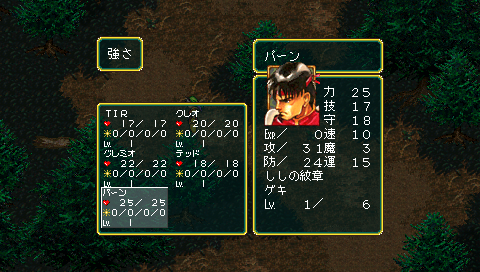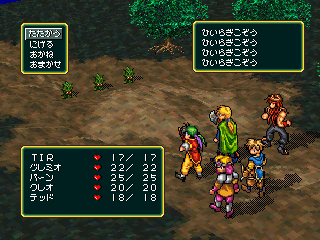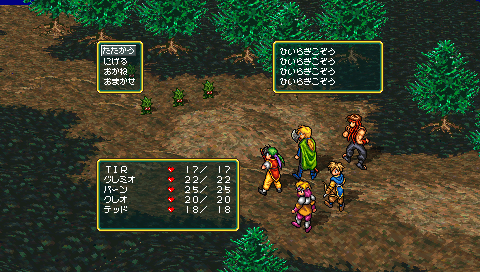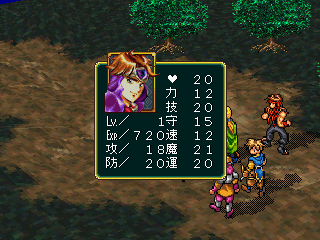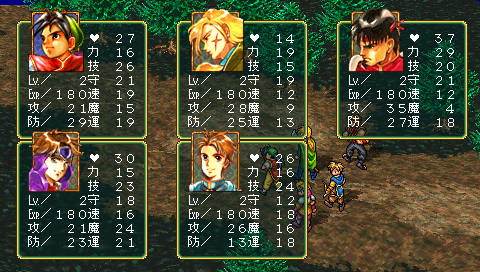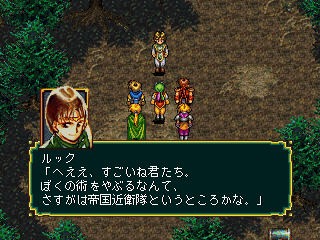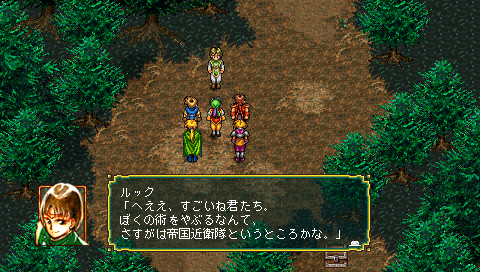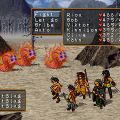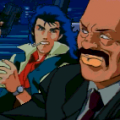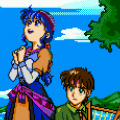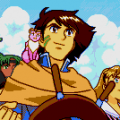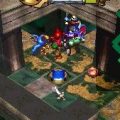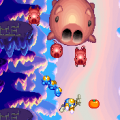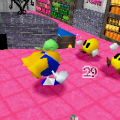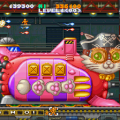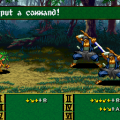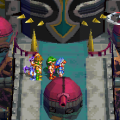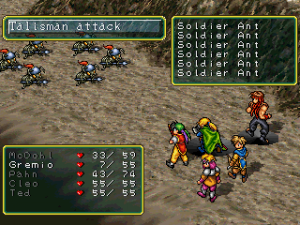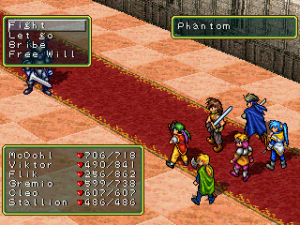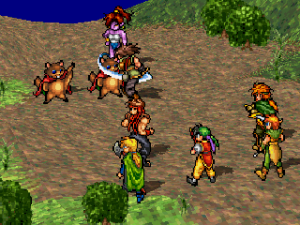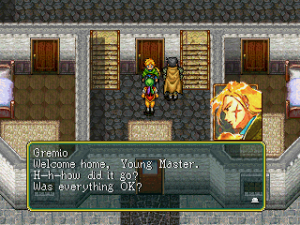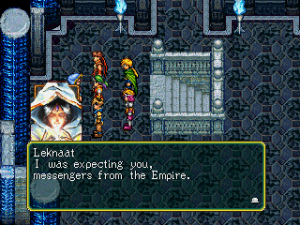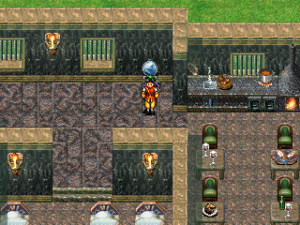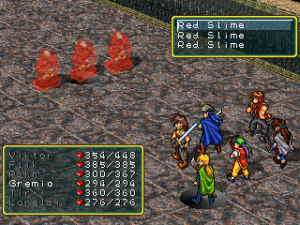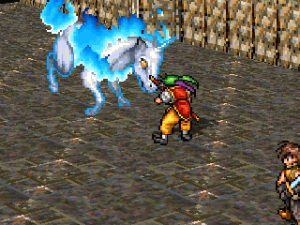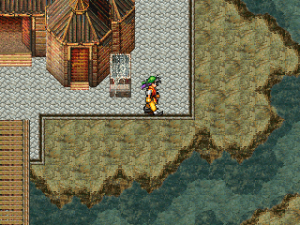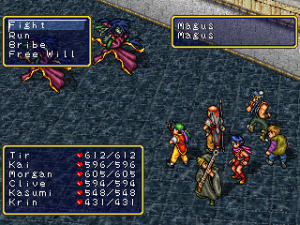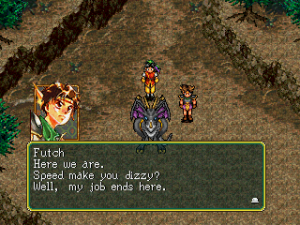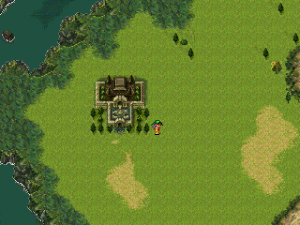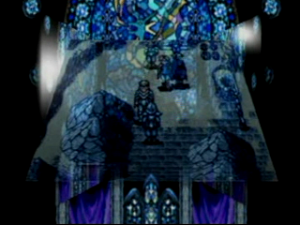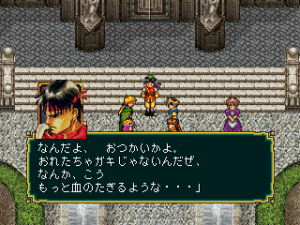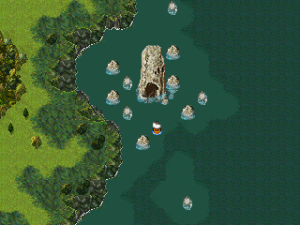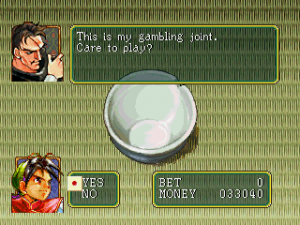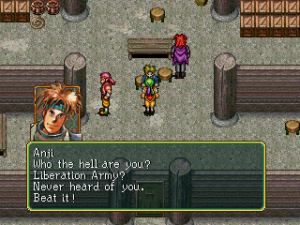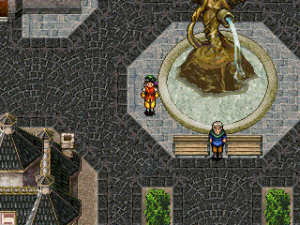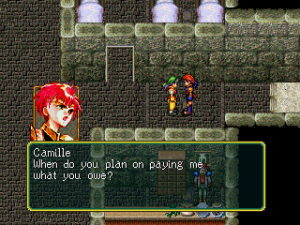The first Suikoden begins with Tir McDohl, the son of the famous general Teo McDohl of the Scarlet Empire. While his father is away leading battles in the north, his son and his companions are left behind in the empire. While initially working as a low-level errand boy, Tir’s fate begins to change. On the group’s way to apprehend some local bandits, they encounter a deadly monster. In order to overcome it, one of Tir’s companions somehow unleashes powerful magic against a strong foe. This sparks interest among the nobles of the Scarlet Moon Empire, especially Windy, the court magician. Windy’s desire of such power has caused disarray to Tir and his friends and they are forced into exile. If that was not enough, he is burdened with the Soul Eater Rune, one of the 27 True Runes that bestows life and death. He eventually meets up Odessa, the leader of the liberation army, and through various circumstances, he overtakes her position. Now Tir must overthrow the Scarlet Moon Empire, the place that was once his home.
Characters
Tir McDohl
He is a young man from Gregminister. His life takes a drastic turn as he takes hold of the Soul Eater Rune. He is named Ryui in the manga version.
Gremio
While Tir’s father is away from the empire, Gremio takes care of young Tir. Although Gremio is technically a servant of the McDohls, he treats Tir like his own son.
Ted
One of Tir’s closest friends. His background is rather mysterious. He possesses the infamous Soul Eater Rune, which must be kept secret among other people. Even so, he has shown kindness to his companions.
Odessa Silverberg
She is the leader of the liberation army. She hates the corruption that has plagued the Scarlet Moon Empire.
Mathiu Silverberg
He is the brother of Odessa Silverberg. His relationship with his sister is strained due to their opposing views about the war. He serves as the main tactician in this installment.
Flik
Flik is a member of the resistance and Odessa’s boyfriend. He is known by his hot-bloodedness and is the token pretty boy.
Viktor
He is a wandering swordsman. Because of his vagabond nature, he often gets involved in civil wars in the region. He has ways to get around, even though some of his tactics seem a little blunt.
Barbarossa
He is the Emperor of the Scarlet Moon Empire. After the Queen’s death, he has become apathetic towards running the kingdom. Because of his passive behavior, the aristocrats seize the opportunity to enact their own agenda for running the empire.
Since this is the first installment in the series, the basic battle system builds the foundation for the subsequent Suikodengames. However, there are other minor features that differ from most RPGs. For example, instead of buying different weapons for each character, everyone sticks with their own weapon. It can be strengthened by going to the blacksmith and paying him for an upgrade. You can also attach rune pieces to the weapons, which adds different elemental powers to it. The magic system works like the original Final Fantasy. All magic spell are classified in levels, which can only be cast a certain number of times. Like most early PlayStation JRPGs, Suikoden features random encounters. They are fairly frequent, but the overall pace of the battles is very quick, so don’t worry too much about the frequent random encounters.
The army battle in the first Suikoden is handled differently from the other games. Here, it plays a lot like rock-paper-scissors. You need to predict on what your opponent is about to do, and you choose your action. Unless you have any intel to anticipate the next attack, there’s a lot of guesswork involved. Although it plays similarly to the duel battle, there are minor differences. With the aid of other characters, you have numerous options to bolster your attacks.
The visuals and the interface are a bit dated, understandable considering it was released during the early PlayStation era. The graphics in general are very rough and grainy. The interface is cumbersome, and you’ll be shifting items frequently just to make room in your inventory. Occasionally, you’ll be forced to use a specific character for plot reasons, leaving less room for your favorite characters. One of the major aggravations comes with the need to recruit all 108 stars. For instance, if you need to have five people to recruit an important character, it might not be possible due to a mandatory character occupying the slot. The only alternative is either to load an earlier save file or start over.
Overall, the first Suikoden is a typical standard JRPG with a strong Eastern influence. The story is very simplistic and it can be finished within 15-20 hours. Although the first game is considered outdated in terms of gameplay, it’s still worth playing to see where the story begins and how it relates to Suikoden II.
Due to its modest success, Suikoden was ported to other systems, first to the Sega Saturn. It came out in Japan roughly three years after the PlayStation release in 1995. The graphics are less detailed than its PlayStation counterpart, but it’s considered a “Director’s Cut” due to some additions not found in the original version. Although there are some significant changes, most of them are quite subtle. First off, there’s a new intro, which shows some important characters and events. Some of the minigames you find in the original have alterations here. For example, the card minigame on PlayStation is a matching game, while the Saturn version is a blackjack game. There is a minor event where the pirates kidnap one of the female characters in the castle, and it’s up to you to go after them. Lastly, there’s a battle arena where you can win rare items. Everything else remains the same.
Suikoden was also ported to Windows 95 and released in Japan, China and Korea. Instead of just directly porting the PlayStation version over, they totally rebuilt it and designed it around the Windows interface. The main window is where all of the action takes place, and runs in the same 320×240 resolution as the PlayStation game, so it’s pretty small. Everything else – the dialogue, the menus, the battle commands – each take up their own window, where you can select them via the mouse. You can also move your character with the keyboard or by pointing and clicking. The graphics and music are otherwise identical to the PlayStation game.
In early 2006, while the PSP was at its infancy, Konami released Genso Suikoden I & II for the PSP. However, there are minor differences. First off, it uses the Saturn version of the opening. Unlike some other PlayStation to PSP ports, which simply stretch and filter the graphics, it actually uses the proper widescreen resolution, and zooms out the display to fit all of the extra pixels. Now, Tir can move diagonally when traversing from one place to another. Other than that, everything else remains the same.
In 2008, Konami once again ported Suikoden, this time to mobile phones. It’s the same thing as the original PlayStation version, only with the graphics squeezed onto the mobile phone format. None of these ports were made available in the West, but fortunately, North Americans had their chance of getting this game on PlayStation 3 or Vita via PSN in late 2008 and Europe in early 2015.
Screenshot Comparisons
